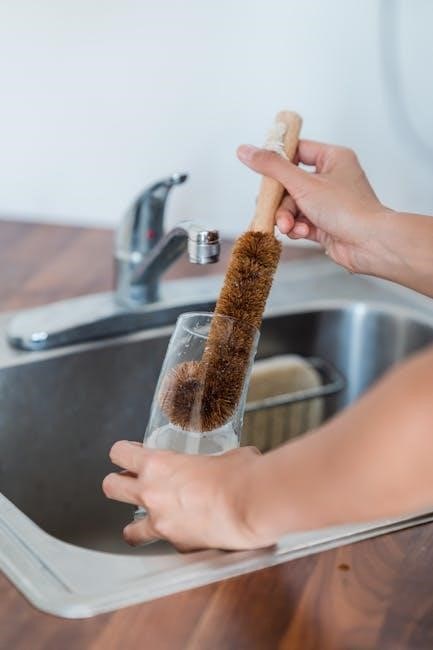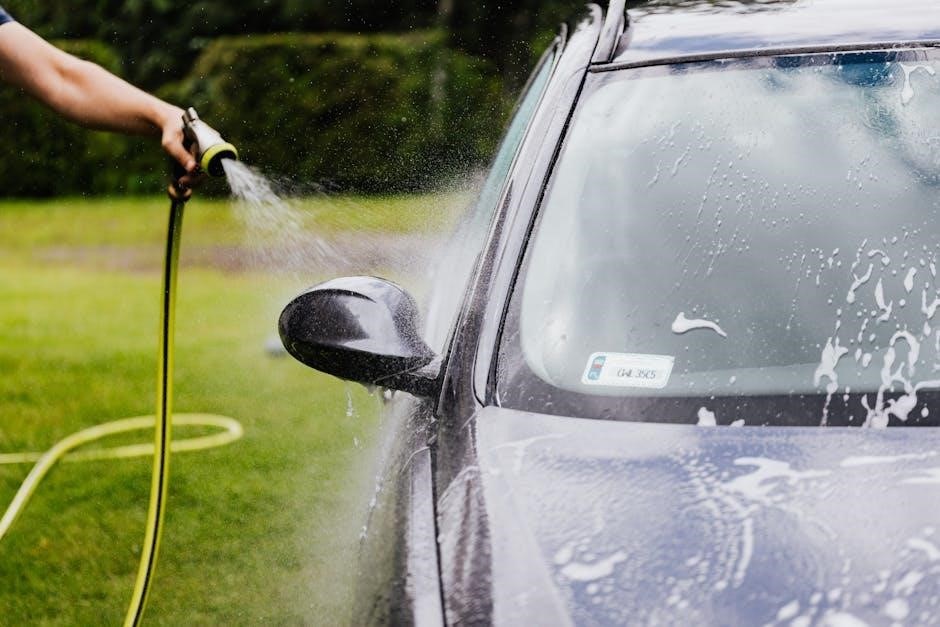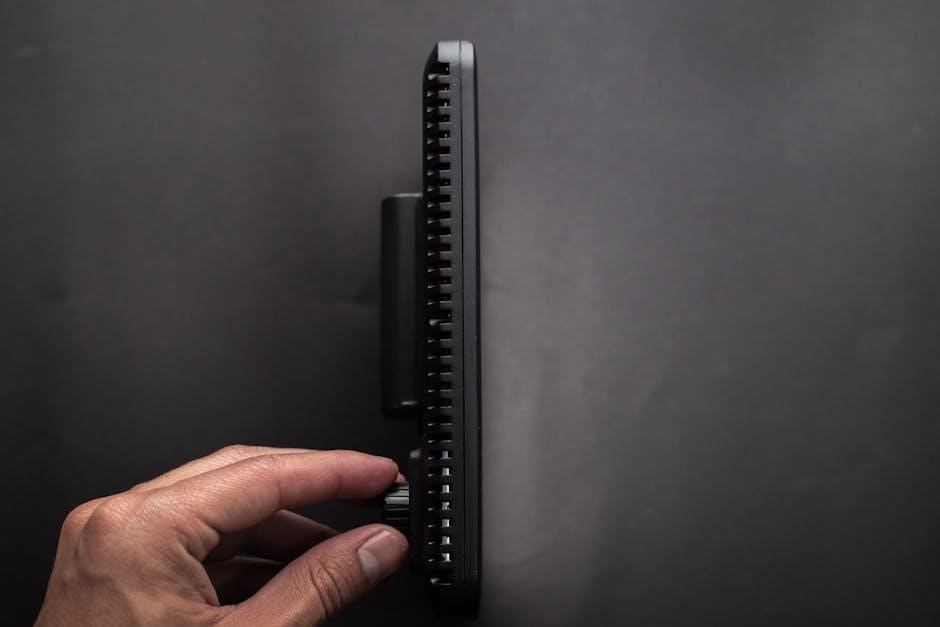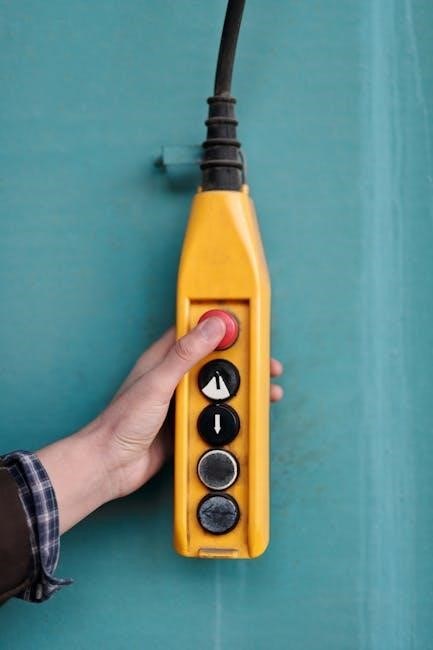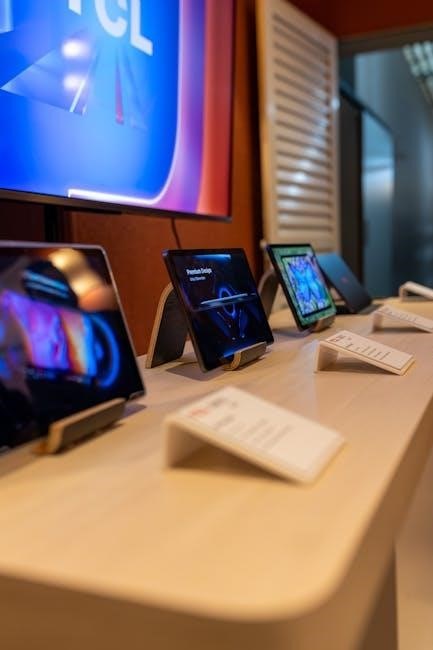Aircraft manuals are comprehensive guides essential for safe flight operations, detailing systems, procedures, and compliance requirements. They play a critical role in pilot training and aviation safety, as seen in the Boeing 737 Max 8 manual’s brevity on MCAS, highlighting their importance in preventing accidents and ensuring regulatory adherence.
1.1 Importance of Flight Manuals for Pilots
Flight manuals are indispensable for pilots, providing critical information for safe aircraft operation. They detail systems, procedures, and emergency protocols, ensuring pilots can respond effectively in any situation. The Boeing 737 Max 8 manual’s limited reference to the MCAS system underscores the importance of thorough documentation. Similarly, incidents like the 2008 Lufthansa A320 near-crash highlight how accurate manual information can prevent accidents. Manuals also serve as legal and training tools, guiding pilots on compliance and best practices. Their clarity and completeness directly impact flight safety, making them a cornerstone of aviation professionalism and regulatory adherence.
1.2 Historical Development of Aircraft Manuals
Aircraft manuals have evolved significantly since the early days of aviation, transitioning from basic notes to comprehensive guides. Initially, manuals were simple documents outlining basic aircraft operations. Over time, they became more detailed, incorporating safety protocols, system descriptions, and regulatory requirements. The digital age brought electronic manuals, enhancing accessibility and updates. Historical incidents, such as the 2008 Lufthansa A320 near-crash, highlighted the need for precise documentation. Today, manuals like the Boeing 737 Max 8’s 1,600-page guide reflect the complexity of modern aircraft, emphasizing safety and compliance. This evolution underscores the critical role of manuals in adapting to technological advancements and ensuring aviation safety.

Types of Aircraft Manuals
Aircraft manuals include the Airplane Flight Manual (AFM) and Pilot’s Operating Handbook (POH), each tailored to specific aircraft needs for safe and compliant flight operations.

2.1 Airplane Flight Manual (AFM)
The Airplane Flight Manual (AFM) is a legally required, serial-number-specific document for an aircraft, providing detailed operational and performance data. It is tailored to the specific aircraft model and configuration, ensuring compliance with aviation regulations. The AFM includes critical information such as system descriptions, performance characteristics, and operational procedures. It serves as the primary reference for pilots to understand and safely operate the aircraft. Unlike more general manuals, the AFM is customized for each aircraft, making it indispensable for pre-flight checks and in-flight decision-making. Its precision and specificity are vital for maintaining safety and adherence to regulatory standards.
2.2 Pilot’s Operating Handbook (POH)
The Pilot’s Operating Handbook (POH) is a general guide for aircraft operation, providing essential information for pilots to understand and safely operate the aircraft. Unlike the AFM, the POH is not serial-number-specific and is typically designed for a particular aircraft type or model. It includes standard operating procedures, performance data, and system descriptions, serving as a foundational resource for pilot training and everyday operations. The POH is often more accessible and concise than the AFM, focusing on practical information for flight preparation and execution. While it may not cover every detail, it remains a critical tool for ensuring safe and efficient flight operations, complementing the more detailed AFM.

2.3 Differences Between AFM and POH
The Airplane Flight Manual (AFM) and Pilot’s Operating Handbook (POH) serve distinct purposes. The AFM is a legally required, serial-number-specific document detailing an aircraft’s technical specifications, limitations, and operational procedures. It is tailored to the specific aircraft and is mandatory for compliance. In contrast, the POH is a more general guide for a particular aircraft type or model, focusing on standard operating procedures and performance data. While the AFM is detailed and legally binding, the POH is more accessible and practical for everyday operations. Understanding these differences is crucial for pilots to ensure they reference the correct manual for their needs, whether for legal compliance or operational guidance.
Boeing 737 Max 8 Flight Manual Controversy
The 1,600-page Boeing 737 Max 8 manual briefly mentions the MCAS system, sparking controversy over its adequacy for pilot training and accident prevention, leading to scrutiny and updates.
3.1 MCAS System Overview
The Maneuvering Characteristics Augmentation System (MCAS) is a flight control system designed to enhance aircraft stability and reduce pilot workload during specific flight maneuvers. It automatically adjusts the aircraft’s trim to prevent stalls, particularly during high-angle-of-attack situations. MCAS relies on data from angle-of-attack sensors to determine when to activate, ensuring the aircraft remains controllable. Introduced in the Boeing 737 Max series, MCAS was intended to improve handling characteristics and maintain consistency with previous 737 models. However, its implementation and reliance on a single sensor raised concerns, as highlighted in investigations following fatal accidents. The system’s operation and limitations became central to discussions about pilot training and aircraft safety.
3.2 MCAS in the 737 Max 8 Manual
The Boeing 737 Max 8 flight manual mentions the MCAS system only once, despite its critical role in flight safety. This brevity has been a focal point in investigations, as the system’s operation and limitations were not extensively detailed. The manual’s concise reference to MCAS has raised concerns about pilot awareness and training, particularly regarding its automatic trim adjustments. The lack of comprehensive documentation has been criticized for potentially contributing to accidents by leaving pilots unprepared to respond to MCAS-related issues. This oversight highlights the importance of thorough manual content to ensure pilot understanding and safe aircraft operation.
3.3 Investigations and Updates Post-Crashes
Following the tragic crashes of the Boeing 737 Max 8, investigations revealed critical gaps in the aircraft’s manual, particularly regarding the MCAS system. Regulatory authorities and Boeing faced intense scrutiny, leading to a comprehensive review of the flight manual. Updates included enhanced descriptions of MCAS functionality, its activation conditions, and recovery procedures. Pilots were also provided with revised training protocols to address system malfunctions. These changes aimed to improve transparency and safety, ensuring pilots could respond effectively to MCAS-related issues. The updates underscored the importance of clear documentation in preventing future accidents and restoring confidence in the aircraft’s safety.

Airbus A320 Flight Manual Insights
The Airbus A320 manual provides detailed insights into advanced systems and safety protocols, with specific features enhancing pilot understanding and operational efficiency, as highlighted in past incident analyses.
4.1 Specific Features of the A320 Manual
The Airbus A320 manual includes advanced features like fly-by-wire technology and the ECAM system, which provides real-time monitoring of aircraft systems. These features enhance pilot situational awareness and streamline operations. The manual also details automated systems, reducing pilot workload during critical phases of flight. Specific sections highlight emergency procedures and system redundancies, ensuring safety. The A320 manual’s structured format and detailed diagrams aid in quick reference during emergencies. Investigators studying past incidents, such as the 2008 Lufthansa A320 near-crash, have emphasized the manual’s role in understanding system behaviors. These insights underscore the manual’s importance in training and operational safety, making it a cornerstone of A320 operations.

4.2 Lessons from Past Incidents
Past incidents involving the Airbus A320 have highlighted the importance of adhering to manual guidelines and understanding automated systems. For instance, the 2008 Lufthansa A320 near-crash revealed gaps in pilot training and manual clarity. Investigators found that pilots were not fully prepared to handle unexpected system behaviors, emphasizing the need for detailed manual procedures. These events led to updates in the A320 manual, focusing on emergency protocols and automated system interactions. The incidents also underscored the importance of pilot training programs aligning with manual instructions. By addressing these shortcomings, the A320 manual has become more comprehensive, reducing risks and enhancing flight safety. These lessons continue to shape aviation practices globally.
4.3 Regulatory Implications for Manual Updates
Regulatory implications for manual updates are critical to ensuring aviation safety. Following incidents like the 2008 Lufthansa A320 near-crash, aviation authorities mandated updates to the A320 manual. These updates included enhanced emergency protocols and clearer guidance on automated systems. Regulatory bodies, such as the FAA and EASA, require rigorous review and approval processes for manual revisions. Compliance with these standards ensures that pilots have access to accurate and up-to-date information. The transition to digital manuals has also been influenced by regulatory demands, enabling real-time updates and improved accessibility. These measures reflect the aviation industry’s commitment to safety and adherence to global standards, reducing risks and enhancing pilot preparedness.

Regulatory Requirements for Flight Manuals
Aviation authorities mandate detailed documentation, ensuring adherence to safety and operational standards. Each aircraft’s manual must meet legal requirements, guaranteeing accuracy and compliance for safe flight operations.
5.1 Role of Aviation Authorities
Aviation authorities play a pivotal role in ensuring flight manuals meet stringent safety and operational standards. They enforce legal requirements, oversee manual accuracy, and regulate updates. These bodies investigate incidents, like the Boeing 737 Max 8 MCAS oversight, to improve manual clarity and compliance. Their oversight ensures pilots have reliable, updated information, critical for safe operations and regulatory adherence.
5.2 Compliance Standards for Manuals
Compliance standards for aircraft manuals ensure adherence to legal and safety requirements, guaranteeing accurate and reliable information for pilots. These standards are set by aviation authorities and vary by aircraft type. The Airplane Flight Manual (AFM) is legally required and specific to each aircraft’s serial number, while the Pilot’s Operating Handbook (POH) provides more generalized guidance. Compliance ensures manuals are updated regularly, reflecting system changes and safety protocols. Non-compliance can lead to operational risks, as seen in the Boeing 737 Max 8’s MCAS system oversight, emphasizing the critical role of strict adherence to these standards for aviation safety and regulatory approval;
5.3 Serial-Number-Specific Documentation
Serial-number-specific documentation tailors aircraft manuals to individual planes, ensuring compliance with unique configurations and regulatory requirements. This customization is vital for safety and performance, as each aircraft may have distinct features. The Airplane Flight Manual (AFM) is a prime example, being legally required and specific to an aircraft’s serial number. This ensures pilots have precise information for their specific plane, reducing operational risks. Regular updates are mandated by aviation authorities to reflect modifications or system changes. Such documentation is critical for maintaining compliance and ensuring that all safety protocols are followed, as highlighted by the importance of accurate manuals in incidents like the Boeing 737 Max 8 controversies.
Digital vs. Traditional Flight Manuals
Digital flight manuals offer enhanced accessibility, searchability, and ease of updates for pilots compared to traditional paper manuals, improving efficiency and safety in aviation operations.
6.1 Advantages of Digital Manuals
Digital flight manuals offer significant advantages, including enhanced search functionality, real-time updates, and reduced physical storage needs. They enable pilots to quickly access critical information, improving efficiency and safety. Digital manuals are environmentally friendly, reducing paper usage, and can be easily distributed across devices. Their interactive features, such as hyperlinks and annotations, enhance user experience. Additionally, digital manuals can be updated instantly, ensuring compliance with the latest regulations and aircraft specifications. This accessibility and ease of use make them a valuable tool for modern aviation, addressing the limitations of traditional paper manuals while promoting better knowledge retention and operational readiness.

6.2 Challenges in Transitioning to Digital
Transitioning to digital flight manuals presents several challenges, including pilot resistance to new technology and the need for consistent internet access. Many pilots are accustomed to paper manuals, making the shift to digital interfaces difficult. Additionally, digital systems require robust IT infrastructure, which can be costly and logistically complex to implement. Security concerns, such as data breaches or system vulnerabilities, also pose risks. Furthermore, digital manuals must be regularly updated, requiring reliable mechanisms for distribution and verification. Training programs for pilots and maintenance crews are essential but time-consuming. Despite these hurdles, the benefits of digital manuals often outweigh the challenges, driving gradual adoption across the aviation industry.
6.3 Future Trends in Manual Distribution
Future trends in manual distribution are expected to focus on enhanced accessibility and integration of advanced technologies. Digital manuals will likely incorporate AI-driven search functions and real-time updates, ensuring pilots have the most current information. Cloud-based systems will enable seamless access across devices, reducing reliance on physical copies. Augmented reality (AR) could enhance manual interactions, providing visual overlays for complex procedures. Personalized manuals, tailored to specific aircraft and pilot needs, may become standard. Additionally, automated compliance tracking and predictive maintenance features will streamline operations. These innovations aim to improve safety, efficiency, and user experience, making digital manuals indispensable in modern aviation.
Safety Best Practices for Using Flight Manuals
Adhering to safety best practices ensures pilots follow updated procedures, conduct thorough pre-flight checks, and maintain compliance with regulatory standards, crucial for accident prevention and safe aviation operations.
7.1 Pre-Flight Manual Checks
Pre-flight manual checks are critical to ensure compliance with safety standards and aircraft-specific requirements. Pilots must verify the manual’s serial-number-specific documentation matches the aircraft, as discrepancies can lead to operational errors. They should review updates, especially for systems like MCAS in the Boeing 737 Max, which was under-documented. Checking for regulatory compliance and ensuring all procedures align with the latest updates is essential. Incomplete checks, as seen in past incidents like the Lufthansa A320 near-crash, can compromise safety. Thorough pre-flight manual reviews help identify potential issues, ensuring safe and efficient flight operations.

7.2 In-Flight Reference Practices
In-flight reference practices require pilots to efficiently access and interpret aircraft manual information. Digital manuals, like those for the Boeing 737 Max 8, allow quick searches for critical systems such as MCAS. However, pilots must avoid information overload by focusing on relevant sections. Standardized formatting in manuals, whether digital or traditional, enhances readability. Crews should cross-reference data to ensure accuracy, especially during unexpected situations. Effective in-flight manual use balances safety with operational efficiency, preventing distractions while addressing emergencies. Proper training on manual navigation is essential to leverage these resources effectively, ensuring safe and precise decision-making during flight operations.
7.3 Post-Flight Manual Updates
Post-flight manual updates are crucial for maintaining accuracy and safety in aircraft operations. Pilots and maintenance crews review flight data to identify system performance anomalies. Updates often involve incorporating feedback from in-flight experiences, such as issues with systems like MCAS in the Boeing 737 Max 8. Digital manuals allow for real-time revisions, ensuring all users access the latest information. Regulatory bodies also require periodic updates to reflect new standards or incident investigations, as seen in the Airbus A320 case. These updates enhance safety, improve efficiency, and ensure compliance with evolving aviation regulations, making post-flight manual reviews an essential part of ongoing aircraft maintenance and operational excellence.
Aircraft manuals are vital for safety, training, and compliance, evolving with technology. Digital formats enhance accessibility, while updates ensure relevance; Their role in aviation continues to grow.

8.1 Summary of Key Points
Aircraft manuals are foundational for aviation safety, detailing critical systems and procedures. The Boeing 737 Max 8 manual’s limited MCAS coverage underscores their importance in preventing accidents. Digital formats enhance accessibility and compliance, while updates address emerging issues. Regulatory bodies ensure standards are met, and manufacturers tailor manuals to specific aircraft needs. Lessons from incidents, like the Lufthansa A320 near-crash, highlight the necessity of clear guidelines. The evolution from traditional to digital manuals reflects modern aviation demands, ensuring pilots have accurate, up-to-date information. These documents remain indispensable for training, operations, and safety, adapting to technological advancements and regulatory changes.
8.2 The Evolving Role of Flight Manuals
Flight manuals have transitioned from bulky physical documents to digital formats, enhancing accessibility and efficiency. The Boeing 737 Max 8’s MCAS system, barely mentioned in its manual, highlights past oversights. Modern manuals now integrate advanced systems like MCAS, ensuring transparency and safety. Digital versions allow real-time updates, critical for addressing emerging issues. The shift reflects aviation’s technological advancements, with manuals adapting to pilot needs. Future trends may include interactive guides and AI-driven updates, further enhancing safety and compliance. This evolution underscores the manual’s enduring role as a vital tool in aviation, adapting to innovation while maintaining its core purpose of ensuring safe flight operations.

